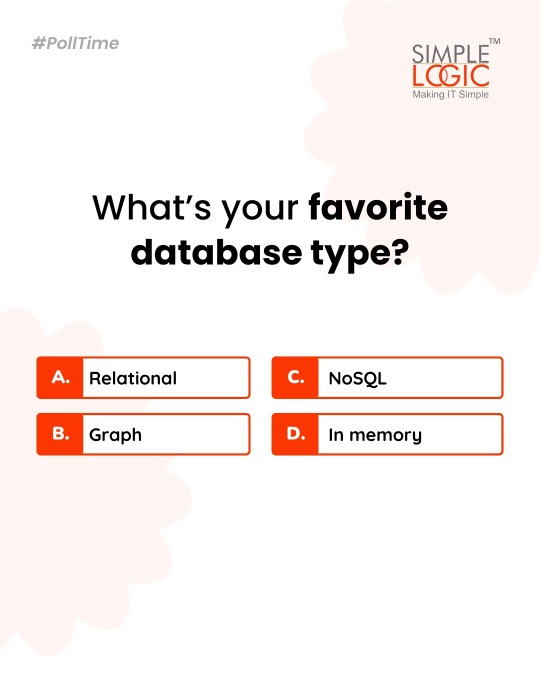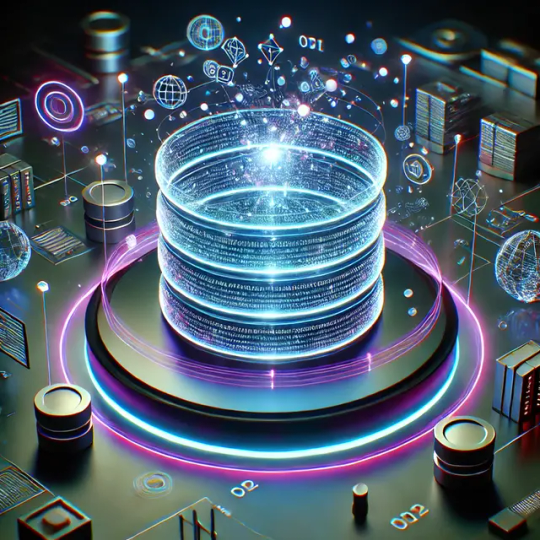#NoSQL database
Explore tagged Tumblr posts
Video
youtube
Create Book Store Microservices with MongoDB using Nodejs Express & Mong...
Full Video Link https://youtu.be/SkOb1ruIUY0
Hello friends, new #video on #nodejs #microservices with #mongodb #tutorial for #api #developer #programmers with #examples is published on #codeonedigest #youtube channel.
@java #java #aws #awscloud @awscloud @AWSCloudIndia #salesforce #Cloud #CloudComputing @YouTube #youtube #azure #msazure #nodejsmicroservice #nodejsmicroservicestutorial #nodejsmicroservicearchitecture #nodejsmicroserviceproject #nodejsmicroserviceexample #nodejsmicroservicesinterviewquestions #nodejsmicroserviceframework #mongodb #nodejsmongodbtutorial #nodejsmongoose #nodejsmongooseconnection #nodejsmongooseexpress #nodejsmongooseschema #nodejsmongodb #nodejsmongodb #nodejsexpress #nodejsexpressapitutorial #nodejsexpressproject #nodejsexpressapi #nodejsexpressapiproject #nodejsexpresstutorial #nodejsexpresscourse #nodejsexpressrestapi #nodejsexpresscrashcourse #nodejsexpressapplication
#youtube#nodejs#node js#nodejs microservice#nodejs microservice mongodb#nodejs express#nodejs mongoose#mongodb#nosql db#nosql database#database
1 note
·
View note
Text

TechnoMaster provides excellent Mango DB course online. MongoDB is a distributed database. It is very simple and easy to use. MongoDB training will help you learn the foremost document-oriented NoSQL database, scheme design, modeling of data, MongoDB Architecture, CRUD, and also indexing by utilizing real-life case studies. TechnoMaster Training Institute is providing MongoDB Training in Dubai for interested candidates who want to learn and master the course in quick time. Our expert assistance for this certification course is immense. We can provide complete assistance to help you have the career of your dreams in the shortest time possible. We give training on industry-based projects so various domains so that effective learning is possible.
For more details on the availability of our Training Program. Click Below:-
Mongo DB Online Training in Dubai
To become an expert MongoDB developer, you have to be at the top of your skill. We help you gain in-depth skills in NoSQL, data modeling, query, information replication, and many more. To be an expert in each topic requires you to set new benchmarks in your career. After getting trained with us, when you join a company, you can do a range of things that others can’t even dare to do. We will give you that professional exposure so that you will set high standards in your career. So, there should not be any more doubts to join our institute. Just reach our experts straightaway to join our training institute.
TechnoMaster (the training division of Nestsoft Technologies, a Kerala based online IT training institute) has been instrumental in shaping the lives of over 10,000 students who attended our IT training programmes since 2001. We provide short term, crash and long term online / offline IT courses on all IT technologies with real time internships at convenient schedules and reasonable fees.
Through our job portal (Jobs Near ME) we aim at helping you get placement in Chennai, Mumbai, Cochin, Infopark, Technopark, Cyberpark, Bengalaru, Delhi, United Arab Emirates (UAE), USA, UK, Australia, Canada, Germany, Ireland, Singapore, Switzerland, Kuwait, Saudi Arabia, Bahrain, Qatar, Oman etc.
#MongoDB#data modelling#NoSQL database#Scheme design#Mongo DB Architecture#best it training institute#best online training#best course in 2023#best institute in uae#best internship in uae#technomaster in uae#internship
1 note
·
View note
Text

#PollTime What’s your favorite database type?
A) Relational 🗄️ B) NoSQL 💾 C) Graph 🌐 D) In memory ⚡
Comments your answer below👇
💻 Explore insights on the latest in #technology on our Blog Page 👉 https://simplelogic-it.com/blogs/
🚀 Ready for your next career move? Check out our #careers page for exciting opportunities 👉 https://simplelogic-it.com/careers/
#simplelogic#makingitsimple#itcompany#dropcomment#manageditservices#itmanagedservices#poll#polls#database#relational#nosql#graph#inmemory#databaseservices#itservices#itserviceprovider#managedservices#testyourknowledge#makeitsimple#simplelogicit
0 notes
Text
Using ColdFusion with NoSQL Databases Like CouchDB
#Using ColdFusion with NoSQL Databases Like CouchDB#Using ColdFusion with NoSQL Databases#ColdFusion with NoSQL Databases
0 notes
Text
Discover the advantages of scalable NoSQL databases for modern applications. Built for flexibility, exceptional performance, and the ability to manage extensive workloads, NoSQL databases are well-suited for real-time data processing and evolving business requirements. Explore how these databases enable seamless scalability, empowering organizations to excel in today’s data-driven landscape.
0 notes
Text
🌐 What is a Database? A Beginner's Guide 📚
📚💾 What is a Database?
Think of it as a high-tech treasure chest 🪙, storing all your important data in one neat place! From managing your Netflix watchlist 🎬 to saving your online shopping carts 🛍️, databases are the silent heroes 🦸♀️ behind your favorite apps. They keep things organized, searchable 🔍, and ready whenever you need them! 🚀✨

🔍 Types of Databases 🌐
1️⃣ 🗃️ Relational Database: Think of it as a spreadsheet 📊 that organizes data into neat tables. Example: MySQL, PostgreSQL.
2️⃣ 📚 NoSQL Database: For all the messy data 🌀—it handles unstructured info like a pro! Example: MongoDB, Cassandra.
3️⃣ ☁️ Cloud Database: Data stored up in the cloud ☁️, ready to be accessed anytime, anywhere! Example: AWS, Google Cloud.
4️⃣ 🧠 In-Memory Database: Super-fast, like the brain 🧠! Stores data in RAM for lightning-speed access. Example: Redis, Memcached.
5️⃣ 🏙️ Graph Database: Connects the dots 🧩 between data, like a social network! Example: Neo4j, Amazon Neptune.
Why Are Databases Important?
💡 Efficient Data Storage: Organize and store massive amounts of data easily.
🔍 Quick Access: Retrieve information in seconds, making tasks faster.
📈 Data Analysis: Helps businesses make smart decisions with organized data.
🛡️ Data Security: Protects sensitive information with backups and encryption.
🔄 Automation: Automates processes like transactions, inventory updates, and more!
🌍 Scalability: Can grow with your business or website as data increases.
3️⃣ Cool Database Facts
🧠 First Database Ever: IBM’s IMS (Information Management System) was created in the 1960s!
🌍 SQL Dominance: SQL is the most widely used database language around the globe.
🚀 Big Data Power: Databases handle massive amounts of data—Google processes over 40,000 searches per second!
#Database#TechTips#SQL#NoSQL#LearnTech#ProgrammingBasics#DataManagement#DBMS#BigData#DatabaseDesign#DataScience#DataAnalytics#CloudDatabase#DataMining#DatabaseAdministrator#RelationalDatabase#DatabaseOptimization#DataVisualization#DataStorage#DataSecurity#DatabaseDeveloper#DataWarehouse#MachineLearning#BusinessIntelligence
0 notes
Text
Bases de Datos Relacionales vs No Relacionales: Diferencias Clave y Qué Necesitas Saber
Introducción
En el mundo del desarrollo de software, las bases de datos juegan un papel crucial en el almacenamiento y gestión de datos. Existen dos categorías principales de bases de datos: relacionales y no relacionales. Cada tipo tiene sus propias características, ventajas y desventajas. En este blog, exploraremos las diferencias clave entre estas dos categorías y qué necesita saber un programador sobre cada una para tomar decisiones informadas.
1. Bases de Datos Relacionales
a) ¿Qué es una Base de Datos Relacional?
Una base de datos relacional (RDBMS, por sus siglas en inglés) organiza los datos en tablas relacionadas entre sí mediante claves primarias y foráneas. Utiliza el lenguaje SQL (Structured Query Language) para la gestión y consulta de datos.
b) Características Clave:
Estructura Tabular: Los datos se almacenan en tablas con filas y columnas. Cada tabla representa una entidad, y cada fila una instancia de esa entidad.
Relaciones entre Tablas: Las tablas pueden estar relacionadas entre sí mediante claves primarias y foráneas.
Transacciones ACID: Asegura que las transacciones sean Atómicas, Consistentes, Aisladas y Duraderas, garantizando la integridad de los datos.
c) Ventajas:
Integridad de Datos: Garantiza la precisión y consistencia de los datos mediante restricciones y reglas.
Consultas Complejas: El lenguaje SQL permite realizar consultas complejas y combinaciones de datos.
Escalabilidad Vertical: Se pueden aumentar los recursos del servidor para manejar mayores cargas de trabajo.
d) Desventajas:
Escalabilidad Horizontal Limitada: Puede ser más difícil escalar horizontalmente (distribuir datos en múltiples servidores).
Rigidez del Esquema: Requiere un esquema fijo, lo que puede hacer que los cambios en la estructura de datos sean complicados.
e) Ejemplos Populares:
MySQL: Amplamente utilizado en aplicaciones web y sistemas de gestión de contenido.
PostgreSQL: Conocido por su robustez y cumplimiento de estándares SQL.
Microsoft SQL Server: Ofrece herramientas avanzadas de análisis y administración de datos.
Oracle Database: Ampliamente utilizado en grandes empresas por su escalabilidad y características avanzadas.
2. Bases de Datos No Relacionales
a) ¿Qué es una Base de Datos No Relacional?
Las bases de datos no relacionales (NoSQL) están diseñadas para manejar grandes volúmenes de datos no estructurados o semi-estructurados. No utilizan un esquema fijo y pueden almacenar datos en varios formatos, como documentos, pares clave-valor, columnas o grafos.
b) Características Clave:
Flexibilidad del Esquema: No requieren un esquema fijo, permitiendo la adaptación de datos según sea necesario.
Escalabilidad Horizontal: Diseñadas para escalar horizontalmente mediante la distribución de datos en múltiples servidores.
Tipos de Datos Diversos: Pueden manejar datos en formatos como JSON, XML, o BSON.
c) Ventajas:
Escalabilidad Horizontal: Fácil de escalar distribuyendo datos en múltiples servidores.
Flexibilidad del Esquema: Permite agregar y modificar datos sin necesidad de un esquema rígido.
Alto Rendimiento: Adecuado para aplicaciones con grandes volúmenes de datos y requisitos de alta disponibilidad.
d) Desventajas:
Consistencia Eventual: En algunos casos, las bases de datos NoSQL sacrifican la consistencia inmediata en favor de la disponibilidad y particionamiento.
Consultas Limitadas: La capacidad de realizar consultas complejas puede ser limitada en comparación con SQL.
e) Ejemplos Populares:
MongoDB: Una base de datos orientada a documentos que utiliza JSON-like para el almacenamiento de datos.
Cassandra: Una base de datos orientada a columnas, conocida por su escalabilidad y disponibilidad.
Redis: Una base de datos en memoria basada en pares clave-valor, utilizada para almacenamiento en caché y procesamiento en tiempo real.
Neo4j: Una base de datos orientada a grafos que permite consultas sobre relaciones entre datos.
3. Cuándo Usar Cada Tipo de Base de Datos
a) Bases de Datos Relacionales:
Aplicaciones Transaccionales: Cuando la integridad y consistencia de los datos son críticas, como en sistemas financieros o de gestión de inventarios.
Consultas Complejas: Si necesitas realizar consultas complejas o combinaciones de datos con SQL.
Aplicaciones con Esquema Fijo: Cuando el esquema de los datos es estable y no se espera que cambie con frecuencia.
b) Bases de Datos No Relacionales:
Big Data y Aplicaciones Web: Para manejar grandes volúmenes de datos y aplicaciones que requieren alta disponibilidad y rendimiento.
Datos No Estructurados: Cuando trabajas con datos no estructurados o semi-estructurados, como contenido de redes sociales o datos de sensores.
Escalabilidad: Si tu aplicación requiere escalar horizontalmente para manejar un crecimiento rápido en la carga de trabajo.
4. Recursos Adicionales
Documentación y Tutoriales:
Documentación de MySQL
Documentación de MongoDB
Tutorial de PostgreSQL
Introducción a NoSQL
Libros Recomendados:
“SQL: El lenguaje de consulta estructurado” de Jesús García
“MongoDB: The Definitive Guide” de Kristina Chodorow (en inglés)
“Designing Data-Intensive Applications” de Martin Kleppmann (en inglés)
Conclusión
Entender las diferencias entre bases de datos relacionales y no relacionales es esencial para elegir la solución adecuada para tus proyectos de desarrollo. Las bases de datos relacionales son ideales para aplicaciones que requieren integridad y consultas complejas, mientras que las bases de datos no relacionales ofrecen flexibilidad y escalabilidad para manejar grandes volúmenes de datos. Conociendo las características y ventajas de cada tipo, puedes tomar decisiones más informadas y construir aplicaciones más efectivas.
#basesdedatos#relacionalvsnorelacional#SQL#NoSQL#MongoDB#MySQL#PostgreSQL#Cassandra#Redis#Neo4j#diferenciasdedatos#programación#desarrollodesoftware#databases#almacenamientodedatos#consultasdedatos#esquemasdedatos#scalabilidad
0 notes
Text
New Trick – Organizing Prisma Models with the MERN Stack – Prisma #16
In this blog, we will explore “New Trick – Organizing Prisma Models with the MERN Stack”. Here, you will learn how to split and organize Prisma models, enums & types from the prisma.schema file into multiple files and import predefined data from JSON files. Let’s dive in and check it out:
#prisma#mongodb#reactjs#react#mern#mernstack#nosql#javascript#js#nodejs#npm#prismaorm#orm#database#redundancy#highavailability#replica#replicaset#developers#developer#software#softwaredeveloper#programming#programminglanguage#javascriptprogramming#advancedjavascript#techtrick#trick
0 notes
Text
What Is the Difference Between SQL and NoSQL Databases?
Understanding the differences between SQL and NoSQL databases empowers you to make informed decisions when designing your data infrastructure. SQL databases are ideal for applications requiring structured data and strong consistency, while NoSQL databases offer flexibility, scalability, and are well-suited for unstructured data.
Read more : https://pencraftednews.com/what-is-the-difference-between-sql-and-nosql-databases/
1 note
·
View note
Text
How to Choose the Right Database for Your Web Application
Read our blog at
0 notes
Text
my head hurts should i suffer and choose a nosql database to build my app or should i just "fuck it we ball" and go with postgresql
i mean i have a really structured data but also lots of rows in the tables (like, millions) and potentially a lot of people could use it at the same time and i plan on using spark to analyze stuff?? like will my app survive like that? i don't know shit
#apache spark#nosql#postgresql#of how the tables have turned i post about programming on tumblr#don't ask me why i am doing this if i don't know enough i just want to graduate#i don't even like databases anymore#chatgpt said it's okay to use postgreql and apache spark in this case so it's something#i had to beg it to give me an answer it kept saying “depends on your project blah blah blah”
1 note
·
View note
Text

Learn mastering in SQL Course with Certification.
Like this and comments on
#sql#nosql#mastering#programming#technology#artificial intelligence#data analytics#science#career advice#career#education#datascience#sql course#database
1 note
·
View note
Text

MongoDB Interview Questions . . Can you achieve primary key - foreign key relationships in MongoDB? . . . . for more information, questions and the tutorial https://bit.ly/3T2jaaP check the above link
#mongodb#dbms#rdbms#nosql#sql#database#data#mysql#oracle#programming#computer#computerscience#computerengineering#javatpoint
0 notes
Text
Managing ColdFusion Data with AWS DynamoDB: NoSQL Database Integration
#Managing ColdFusion Data with AWS DynamoDB: NoSQL Database Integration#Managing ColdFusion Data with AWS DynamoDB#Managing ColdFusion Data NoSQL Database Integration#ColdFusion Data with AWS DynamoDB NoSQL Database Integration#ColdFusion Data with AWS DynamoDB Database Integration
0 notes
Text
Harnessing the Potential of Scalable NoSQL Databases
In today's era of big data and real-time applications, businesses are increasingly adopting NoSQL databases due to their scalability, flexibility, and performance. Unlike traditional relational databases, NoSQL databases are specifically designed to manage diverse data types and large volumes of information, making them well-suited for modern applications that require high availability and low latency. But what are the key factors that make a NoSQL database scalable, and why might it be the right choice for your next project?
Understanding NoSQL Databases
NoSQL databases, also known as "non-relational" databases, depart from the structured schema of traditional relational databases. They utilize diverse data models, including document, key-value, column-family, and graph, to store and manage data. This versatility enables NoSQL databases to effectively handle unstructured, semi-structured, and structured data, often generated in real-time by modern applications.
The Importance of Scalability
As organizations grow, the volume of data they generate and process increases substantially. Traditional relational databases often face challenges in meeting these demands, particularly when managing variable workloads or scaling across distributed systems. NoSQL databases provide a scalable and adaptable solution, designed to align with the dynamic requirements of expanding businesses.
Key Features of Scalable NoSQL Databases
Horizontal Scalability: A defining feature of NoSQL databases is their ability to scale horizontally. Instead of relying on upgrading to more powerful servers (vertical scaling), additional nodes can be integrated into a distributed system to manage increased workloads. This approach offers both efficiency and cost-effectiveness as data volumes grow.
Distributed Architecture: Scalable NoSQL databases leverage a distributed architecture, enabling data to be stored across multiple nodes within a cluster. This design enhances performance while ensuring high availability and fault tolerance.
Flexible Schema: NoSQL databases support dynamic schemas, allowing developers to store and query data without predefined table structures. This flexibility is particularly advantageous for applications handling diverse or evolving data types.
High Throughput and Low Latency: Designed for efficiency, scalable NoSQL databases optimize high-speed read and write operations. This ensures that applications deliver real-time performance, even under heavy workloads.
Replication and Sharding: Replication enhances data redundancy by copying it across multiple nodes, while sharding partitions the data into smaller, manageable segments. Together, these techniques improve both scalability and reliability.
Use Cases for Scalable NoSQL Databases
Scalable NoSQL databases are extensively utilized across industries for applications requiring high performance and adaptability. Key use cases include:
E-commerce: Managing product catalogs, user sessions, and real-time inventory updates.
Social Media: Efficiently storing and retrieving large volumes of user-generated content.
IoT and Analytics: Processing time-series data generated by connected devices.
Gaming: Enabling real-time leaderboards and managing player profiles.
Leading Scalable NoSQL Databases
Several NoSQL databases have established themselves as reliable solutions for scalability:
MongoDB: A document-oriented database renowned for its flexibility and developer-friendly ecosystem.
Cassandra: A column-family database designed to deliver high availability and linear scalability.
Redis: A high-performance key-value store specialized in real-time data processing.
Amazon DynamoDB: A fully managed NoSQL service offering seamless scalability and deep integration within the AWS ecosystem.
Benefits of Scalable NoSQL Databases
Adopting a scalable NoSQL database empowers businesses to:
Manage rapid data growth without sacrificing performance.
Adjust to dynamic and evolving application requirements.
Achieve cost-efficient scalability through distributed architectures.
Deliver a seamless user experience with minimal operational downtime.
Conclusion
Scalable NoSQL databases have become a fundamental component of modern data architectures, offering the performance and flexibility essential in today's fast-paced digital environment. Whether you are developing a social media platform, an IoT application, or a real-time analytics solution, a scalable NoSQL database can support your business objectives effectively. By selecting the appropriate database and utilizing its scalability features, businesses can future-proof their applications and deliver exceptional value to their users.
0 notes
Text
NoSQL databases have surged in popularity due to their scalability, agility, and performance benefits in modern software development services.
0 notes